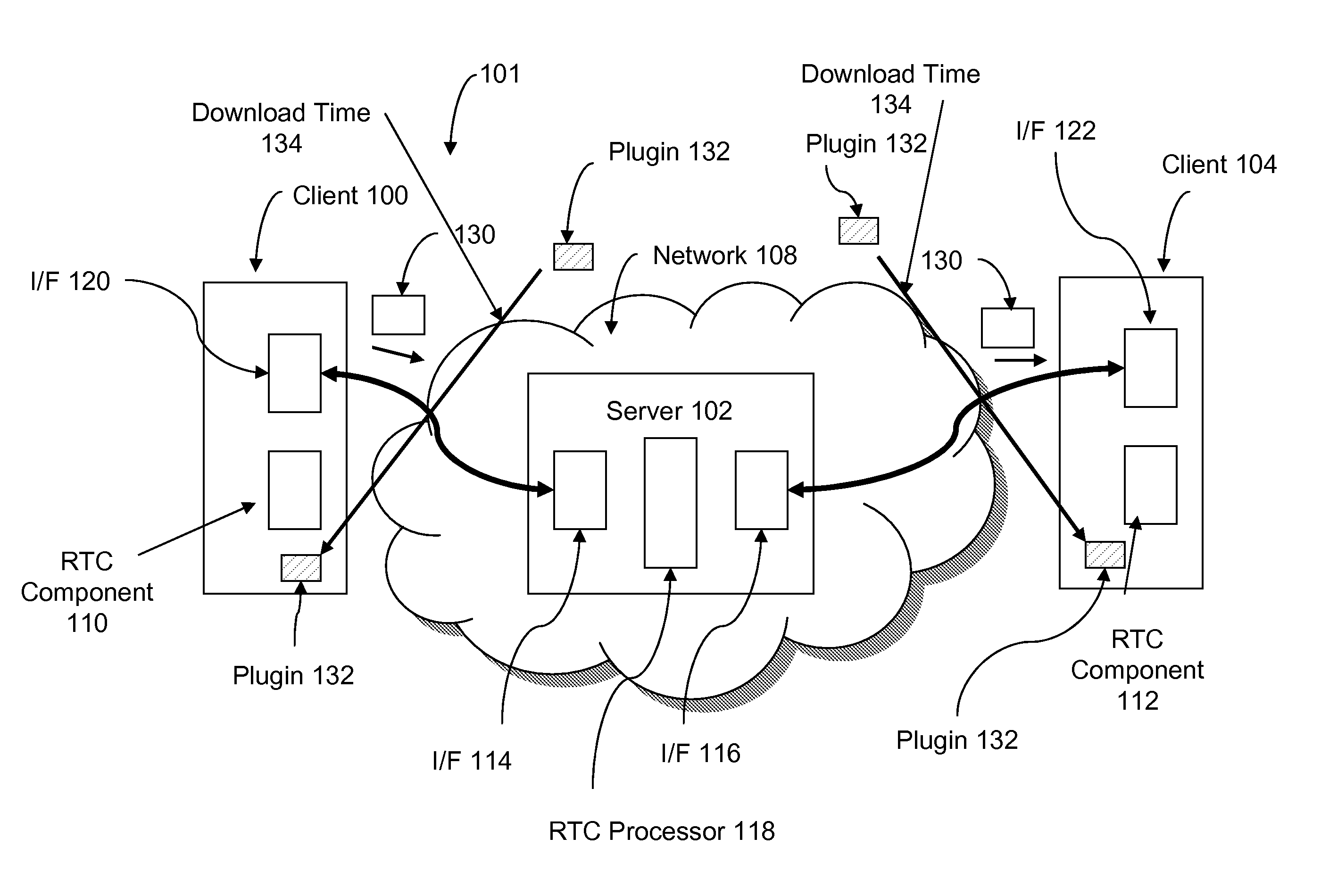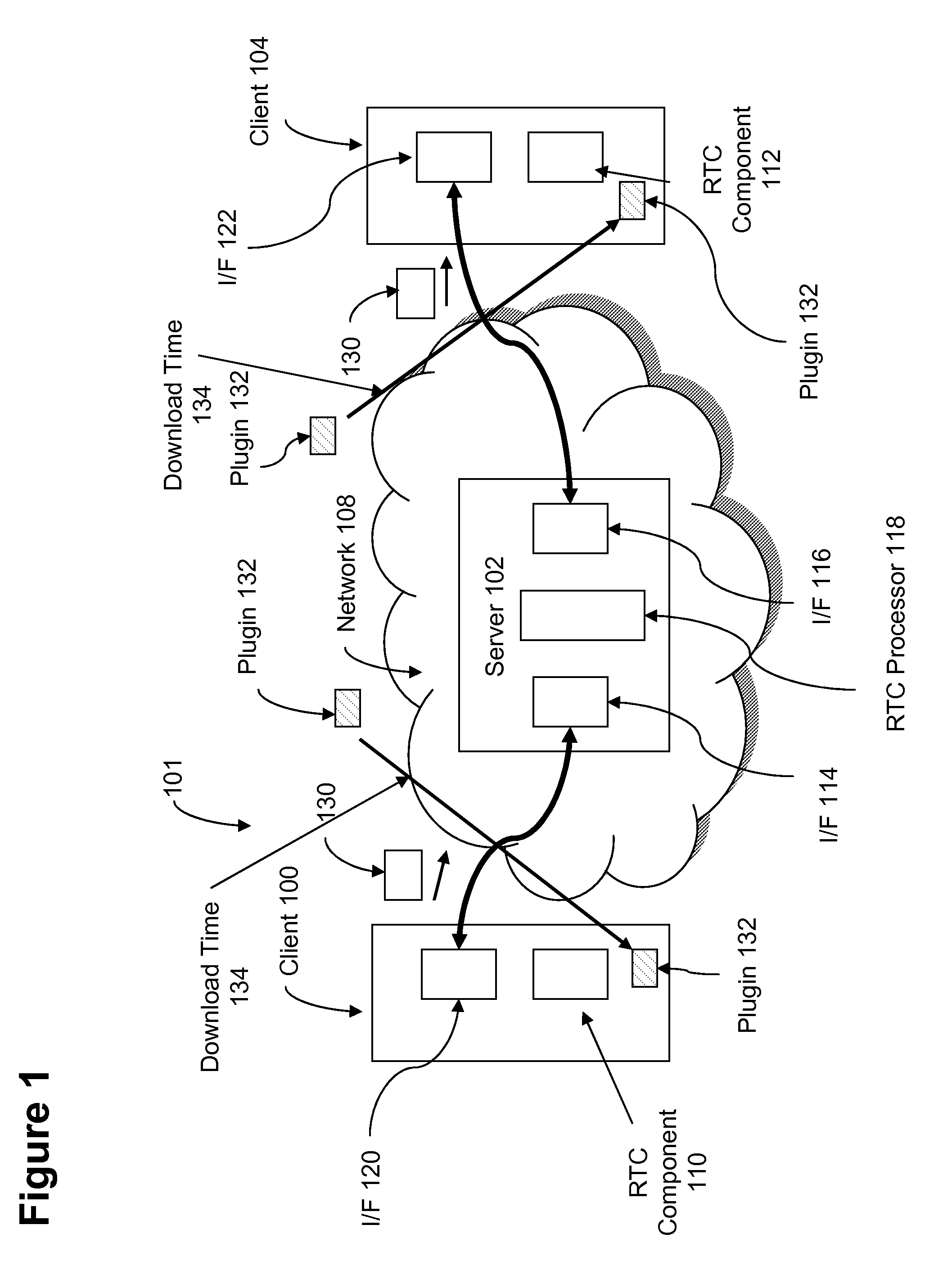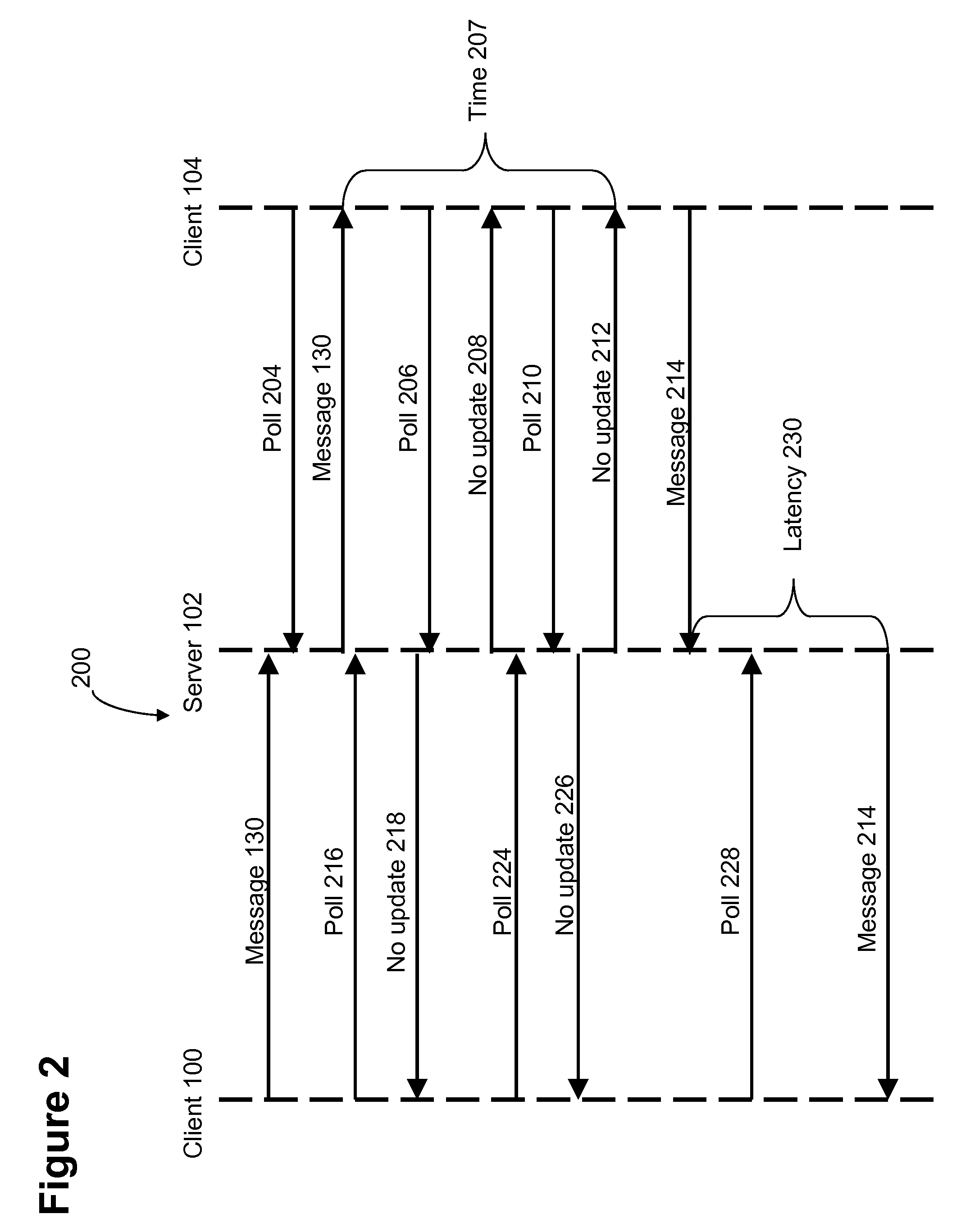System and method for achieving highly scalable real-time collaboration applications using HTTP
a real-time collaboration and application technology, applied in the field of real-time collaboration, can solve the problems of real-time communication, server listening on the port consumes server resources, and achieves the effect of high scalable and highly responsive rtc servi
- Summary
- Abstract
- Description
- Claims
- Application Information
AI Technical Summary
Benefits of technology
Problems solved by technology
Method used
Image
Examples
Embodiment Construction
[0040]As used herein, unless otherwise noted, the term “set” means one or more (i.e., at least one) and the phrase “any solution” means any now known or later developed solution. Additionally, the term “data store” means any type of memory, storage device, storage system, and / or the like, which can temporarily or permanently store electronic data, and which can be included in a storage and / or memory hierarchy (collectively referred to herein as a “memory hierarchy”) for a computer system.
[0041]The invention achieves a highly scalable and responsive RTC service by using non / blocking I / O and HTTP response queuing. Asynchronous I / O, or non-blocking I / O, is a form of input / output processing that permits other processing to continue before the transmission has finished. The distinction between non-blocking or asynchronous I / O and synchronous I / O is shown in FIG. 8 and in FIG. 9. FIG. 8 illustrates the classic web model 800 (synchronous) while FIG. 9 illustrates the non-blocking or asynch...
PUM
 Login to View More
Login to View More Abstract
Description
Claims
Application Information
 Login to View More
Login to View More - R&D
- Intellectual Property
- Life Sciences
- Materials
- Tech Scout
- Unparalleled Data Quality
- Higher Quality Content
- 60% Fewer Hallucinations
Browse by: Latest US Patents, China's latest patents, Technical Efficacy Thesaurus, Application Domain, Technology Topic, Popular Technical Reports.
© 2025 PatSnap. All rights reserved.Legal|Privacy policy|Modern Slavery Act Transparency Statement|Sitemap|About US| Contact US: help@patsnap.com



